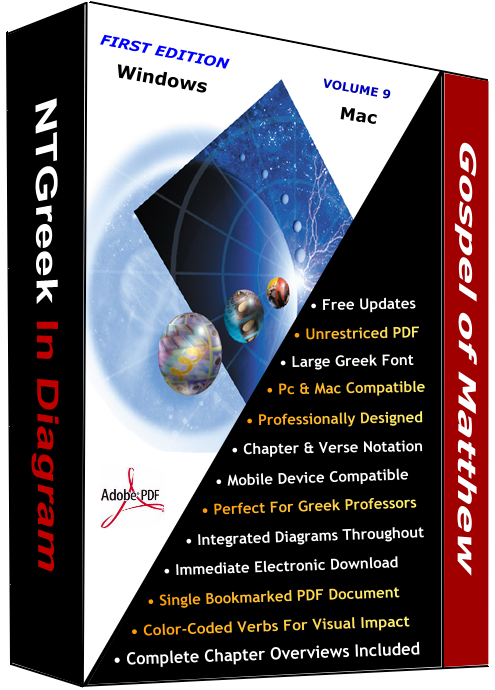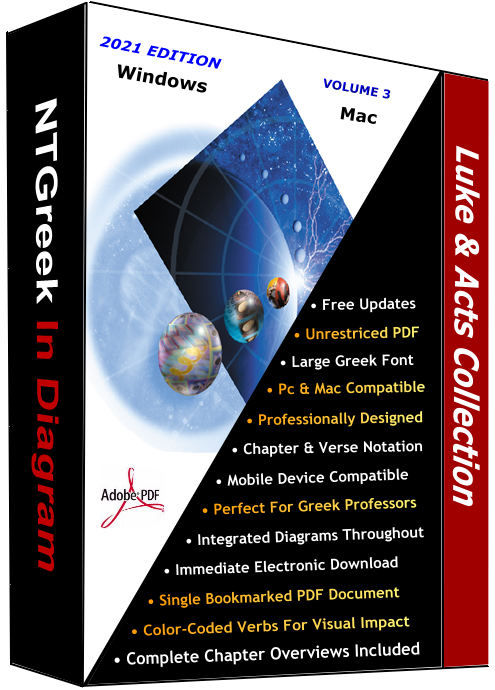The Gospel of Matthew is anonymous. However, attribution of this Gospel to Apostle Matthew dates to the earliest surviving patristic testimonies, and there is no evidence that any
other author was ever proposed. Matthew's literary structure is easily discerned, for large blocks of Jesus' thematic instruction is dispersed within his narrative.
 He essentially alternates five blocks of narrative with five of discourse, marking each off with the phrase "When Jesus had finished" (7:28; 11:1; 13:53; 19:1; 26:1).
He essentially alternates five blocks of narrative with five of discourse, marking each off with the phrase "When Jesus had finished" (7:28; 11:1; 13:53; 19:1; 26:1).
Matthew quotes extensively from the Scriptures, especially the prophetic books; more than sixty quotations of (or strong allusions to) the Scriptures. Matthew does so to fulfill one of his major purposes for writing his gospel: Jesus is the Messiah in whom was fulfilled the Law and the prophets. He groups incidents and discourses together in a manner which highlights the Messiahship of Jesus and the majestic forward movement of the Kingdom.
Matthew's Greek writing style is relatively easy to read, much more so than Luke's, if not only because of the difference in their vocabularies! The length of Matthew's Gospel (18,345 words) is second only to Luke's Gospel (19,482 words) in the Greek New Testament. Matthew uses frequent Semitisms in such a manner that avoids awkwardness and harsh expressions and retains the flow of a eloquent Greek style. Matthew is fond of various numerical patterns, such as the seven petitions in the "Lord's Prayer" (6:9-13), the seven parables (chapter 13), and the genealogy's format of fourteen (7 x 2) generations (1:1-17). His style also includes repetition of contrast and comparison, particularization and climax, inclusion, and chiasmus. [more]
Jesus Christ proclaims in the Sermon on the Mount to His disciples that their righteousness would need to exceed that of the Scribes and Pharisees in order to enter the Kingdom of the heavens. In contrast to what the disciples had "heard" from their religious leaders (in context, the Scribes and Pharisees), what Jesus "said" in the Sermon is the righteous standard required to enter the Kingdom. The righteous are those who are on the narrow path that leads to life, whereas God's unrighteous people are on the broad path that leads to destruction. In this audio recording, Tony Stinson proclaims the good news that by repenting of sin, God's people can become righteous through the power of God, and be found on the narrow way that leads to life.
Many Bible Colleges and seminaries teach the Gospel of Luke and Acts in a single semester of study. With this in mind, the Gospel of Luke and the Acts of the Apostles
diagram sets are now grouped together into a single collection as a single PDF document for easy navigation at
 a very special price, about 25% off if purchased separately.
a very special price, about 25% off if purchased separately.
The Gospel of Luke like its companion volume, Acts of the Apostles, is anonymous. However, Luke, "the beloved physician" and companion of Paul (Col. 4:14; 2 Tim. 4:11; Phm. 24), is probably the author of both volumes. He states the purpose in the first four verses in his Gospel as to provide Theophilus a reliable and precise record of the history of Jesus Christ's life, including what happened after He ascended. Not only as an historian, but also as a medical doctor, Luke pays great attention to detail, including dates and events that occurred throughout the life of Jesus Christ. Both volumes emphasizes prayer, miracles, angels, and the importance of the Kingdom of God.
Luke's Gospel is the longest New Testament writing with approximately 19,482 words--more than a thousand words than his companion volume, the Acts of the Apostles (18,451 words). Luke-Acts together comprises approximately 28% of the Greek New Testament writings, much more than authored by either Paul or John. Furthermore, he is the only Gentile writer of the New Testament.
Luke's elegant lucid Greek style surpasses the writing skills of other New Testament writers. His scholarly approach to detail with an unusual rich Greek vocabulary excites the reader as he graphically paints scene after scene as expressed in the plenitude of genitive absolutes and verbal modifiers. Luke avoids Hebrew, Aramaic, and Latin idioms. Perhaps with the exception of the author of Hebrews, he writes the most grammatically correct and polished Koine Greek of all the New Testament writers. Anyone who wishes to study Greek at its best, the Luke & Acts Collection is an excellent choice. [more]
The Kingdom of God is the central theme of the Scriptures. John the Baptist announced that the promised Messiah, Jesus Christ, and that the prophesied Kingdom had come near. Jesus Christ inaugurated the Kingdom when he began his public ministry, and along with John the Baptist, called the people of God to prepare for the Kingdom through repentance. Though this Kingdom has begun in an unexpected manner, it is the same Kingdom that will one day be manifested in great power and glory upon the return of Jesus Christ. In this audio recording, Tony Stinson challenges those who understand the mysteries of the Kingdom to seize the Kingdom with great zeal and determination, by bearing fruit in keeping with repentance.
The seven hundred and fifty-four occurrences of the Hebrew noun nephesh is listed. The paper is an exhaustive listing as cited by the Hebrew concordance Veteris Testamenti Concordantiae by Solomon Mandelkern. The work includes the Hebrew text of each citation and three English translations (NAS, NKJ, and YLT). The paper offers aid for those who may have found it difficult to find an exhaustive listing for the Hebrew noun among English works. [PDF]
Romans 3:23 is quoted many times as a proof-text that all humans have sinned and therefore require a savior. It is possible that this verse, "for all have sinned and fall short of the glory of God," is the most well-known verse from the apostle Paul's Epistle to the Romans, and perhaps the most often memorized and quoted verse from all of his writings because of its brevity.
The verse is commonly quoted to substantiate the universality of sin. Those who may not be thoroughly acquainted with the larger context however, may assume that "all" includes the entire human race. If the identity of "all" is isolated from its surrounding context, then it is reasonable to make this assumption. However, when it is properly placed in its context, the intent of the verse becomes dynamic for it refers to the same "all" as in the previous verse, "all who believe." [PDF]